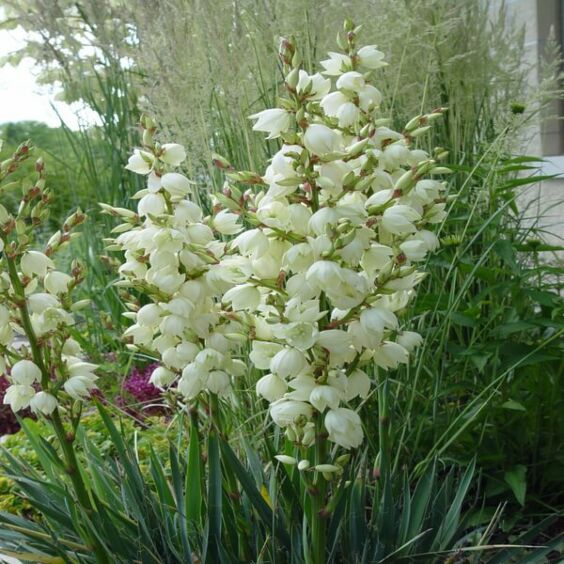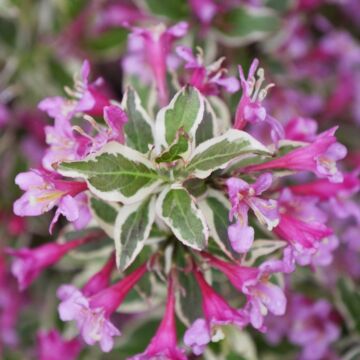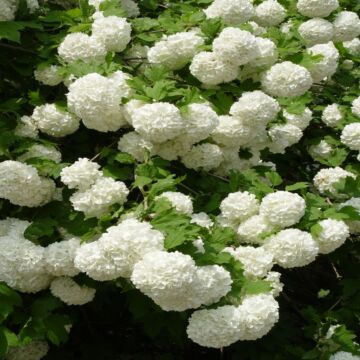
Growing zones
See Zone Map >Status: In stock
Discover Unique Plants for Landscaping at McKay Nursery
Adam's Needle yucca is as practical as it is striking, requiring minimal maintenance while providing maximum impact. Order your very own Adam’s Needle yucca for your garden today! If you’re looking for more ways to upgrade your landscape, this is just one of the unique and resilient plants available at McKay Nursery. For more information, email us at [email protected] or call 920-478-2121 so we can assist with your landscaping needs.
- Sun, Part Sun/Shade
Mature Plant Size (H x W): 3-4' x 3-4'
Bloom Season: Summer
- Attracts Bees
- Deer Resistant
- Drought Tolerant
- Salt Tolerant
- Attracts Pollinators
Planting and Care for Adam's Needle Yucca
Preparation
- This flowering yucca is one of the best for low-maintenance, drought-resistant landscaping.
- Flowers in summer with grand spires of fragrant snow-white bells.
- Fast-growing shrub - grows approximately 3-5’ tall in bloom x 4’ wide.
- An excellent plant for a rock garden or foundation planting.
- Needs a dry, sunny location.
- Remove old leaves or winter-burned leaves in early spring and allow new leaves to develop from the center of the plant.
Opening Plant Material
- Containers: Completely saturate all container plants by putting them in a larger water container until bubbling stops. Remove the plant, then dig a hole no deeper than the depth of the container, ensuring it’s wider on the sides by an additional 6” or more.
Planting Containers
- Yuccas can be planted in early spring.
- Dig a hole no deeper than the depth of the container and 6" or wider on the sides.
- Slide the plant from the pot by tapping on the bottom of the pot.
- With a shovel or knife, trim the bottom 2" off the root ball for plants in plastic containers.
- Rotate the plant to the proper position. Never lift or move plants by the tops.
Place the root ball in the hole. - Adjust the plant height so the root crown is slightly higher than the ground.
Notice where the base of the trunk flares out from the tree. This is called the root flare. This root flare should show when the tree is planted. Add soil under the ball so the root flare is exposed if necessary. - Place fertilizer packets into the bottom of the hole (if purchased). *Use Our Recommended Fertilizer.
- Backfill the hole with soil, ensuring the top of the root ball is visible and slightly higher than the soil around it.
- Firm the soil around the plant. Water well to settle soil around the root ball.
Water frequently when newly planted. - See our link below, “Planting & Handling Help,” for a downloadable planting guide with illustrations.
Pruning - After Planting
- Containers: Although it’s not essential after planting, light pruning can help shape an Adam’s Needle yucca. Doing so removes any broken branches from shipping or thins out a heavily branched plant to assist in the transplanting process and the appearance of your new planting.
Pruning - Throughout the Season
- Tackle pruning in early spring, shortly before the growing season.
- Pruning yucca trees placed outdoors isn’t necessary, though it makes for an easy way to keep it from completely overpowering the yard.
- An indoor yucca plant can benefit more from thinning out the leaves to encourage healthy growth.
- Determine the halfway mark on your yucca and use a saw or similar cutting device. Lop off the top leafy section of the trunk.
- If you don’t want to make it quite as short as the halfway point, you can cut higher.
Watering - After Planting
- Plants typically take approximately 6 weeks to establish new roots in your soil. During this period, water plants as often as every 2-4 days at the start and at least a minimum of once per week.
- Beyond the six-week establishment period, water once per week unless rain occurs.
- Remember to check soil moisture by sticking your finger into the soil around 3”.
Watering - Throughout the Season
- After the first season, plants should only be watered during extended periods without rain.
- How do you know if your plants need water? The easiest way to tell is to touch the soil around the roots. If it is moist, there is no need to water. If it’s dry, give it a good soak with the hose end (no nozzle), watering the soil only, not the leaves.
- Same as after planting, stick your finger into the soil around 3” to check soil moisture.
Frequently Asked Questions
What are the common pests encountered by Adam’s Needle yucca (Yucca filamentosa)?
How long does it take for Adam’s Needle yucca flowers to bloom?
Can you grow Adam’s Needle yucca indoors?
What is the best growing zone for flowering yucca trees?
Is the fruit from a flowering yucca edible?
Planting & Handling Help
Download our Planting and Handling Guide below to plan for a successful arrival and install of your plants. Be sure to water all plants as soon as they arrive and every day until you’re ready to plant. Keep any bare root bundles in a shady, cool spot with the roots covered at all times.


Learn More
Watch our videos on handling bare root plants, how your order is prepared for shipment and more.


Plant Sizing
What is the difference between Containers, Grow Bags, Bare Root, and Balled & Burlap (B&B)?
Shipping Times


Our FedEx and local shipping times depend on two factors, one is by the region and the second is the type of product being shipped. For example, small fruits are only shipped in spring, but majority of our perennials are shipped from spring until fall. Keep in mind the dates below act as a general guide. Due to unpredictable weather, staffing, inventory and industry demands these timelines can change. Therefore, we cannot guarantee any of these times.
Shipping Dates by Region*
Northern Cold Region: April 22nd - November 7th
Northern Region: April 15th - November 7th
Middle Region: April 1st - November 7th
Southern Region: March 15th - November 7th
Local Delivery (small radius from Waterloo, WI): April 22nd - November 7th
Shipping Dates by Season*
Spring Shipping: Region Start Date (above) - May
Fall Shipping: September - November
Due to unpredictable weather, these times may vary. Some varieties are exceptions due to heat and plant health reasons. Enter your shipping zip code at the top of this page and be sure to check the shipping information on each product before you add it to your cart. If the product is too large or restricted in your state, you will not be able to checkout with that item in your cart.


